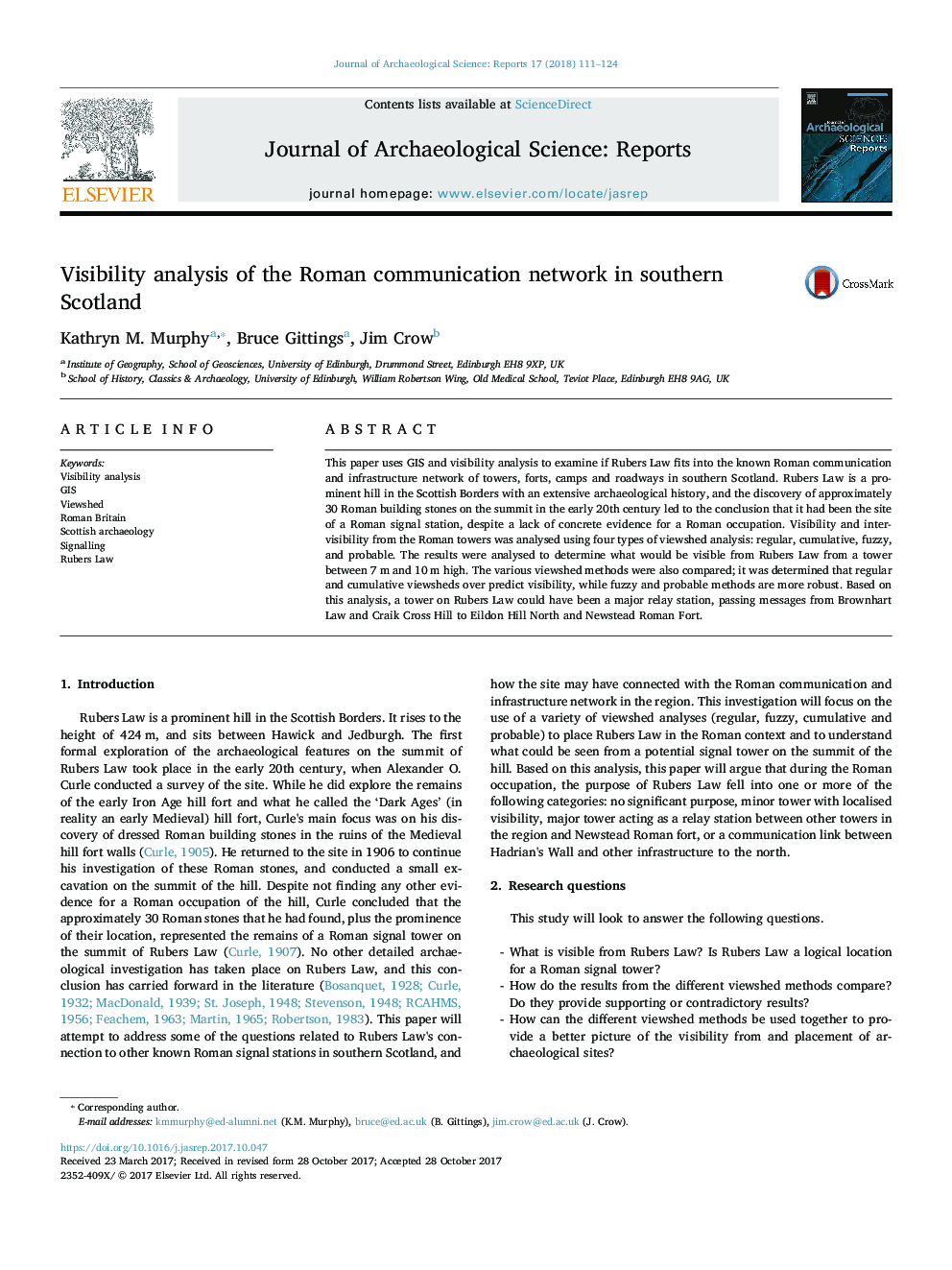| Article ID | Journal | Published Year | Pages | File Type |
|---|---|---|---|---|
| 7445092 | Journal of Archaeological Science: Reports | 2018 | 14 Pages |
Abstract
This paper uses GIS and visibility analysis to examine if Rubers Law fits into the known Roman communication and infrastructure network of towers, forts, camps and roadways in southern Scotland. Rubers Law is a prominent hill in the Scottish Borders with an extensive archaeological history, and the discovery of approximately 30 Roman building stones on the summit in the early 20th century led to the conclusion that it had been the site of a Roman signal station, despite a lack of concrete evidence for a Roman occupation. Visibility and intervisibility from the Roman towers was analysed using four types of viewshed analysis: regular, cumulative, fuzzy, and probable. The results were analysed to determine what would be visible from Rubers Law from a tower between 7Â m and 10Â m high. The various viewshed methods were also compared; it was determined that regular and cumulative viewsheds over predict visibility, while fuzzy and probable methods are more robust. Based on this analysis, a tower on Rubers Law could have been a major relay station, passing messages from Brownhart Law and Craik Cross Hill to Eildon Hill North and Newstead Roman Fort.
Related Topics
Social Sciences and Humanities
Arts and Humanities
History
Authors
Kathryn M. Murphy, Bruce Gittings, Jim Crow,
